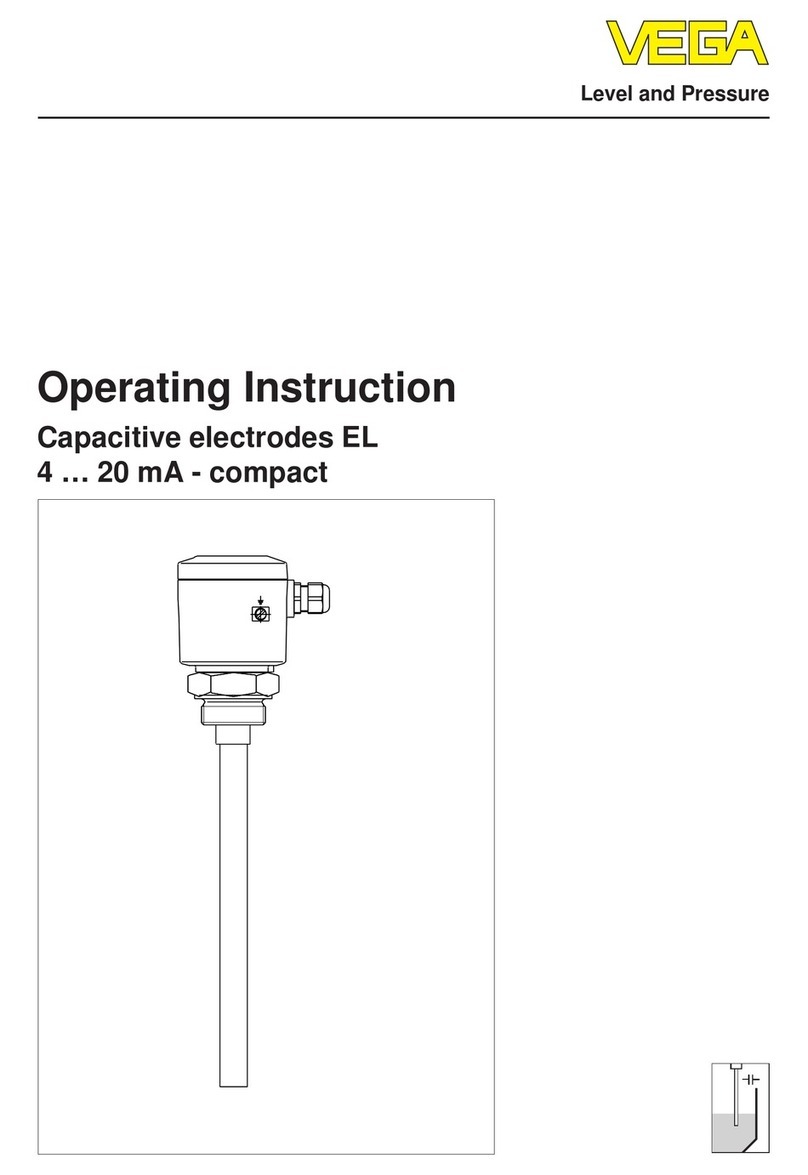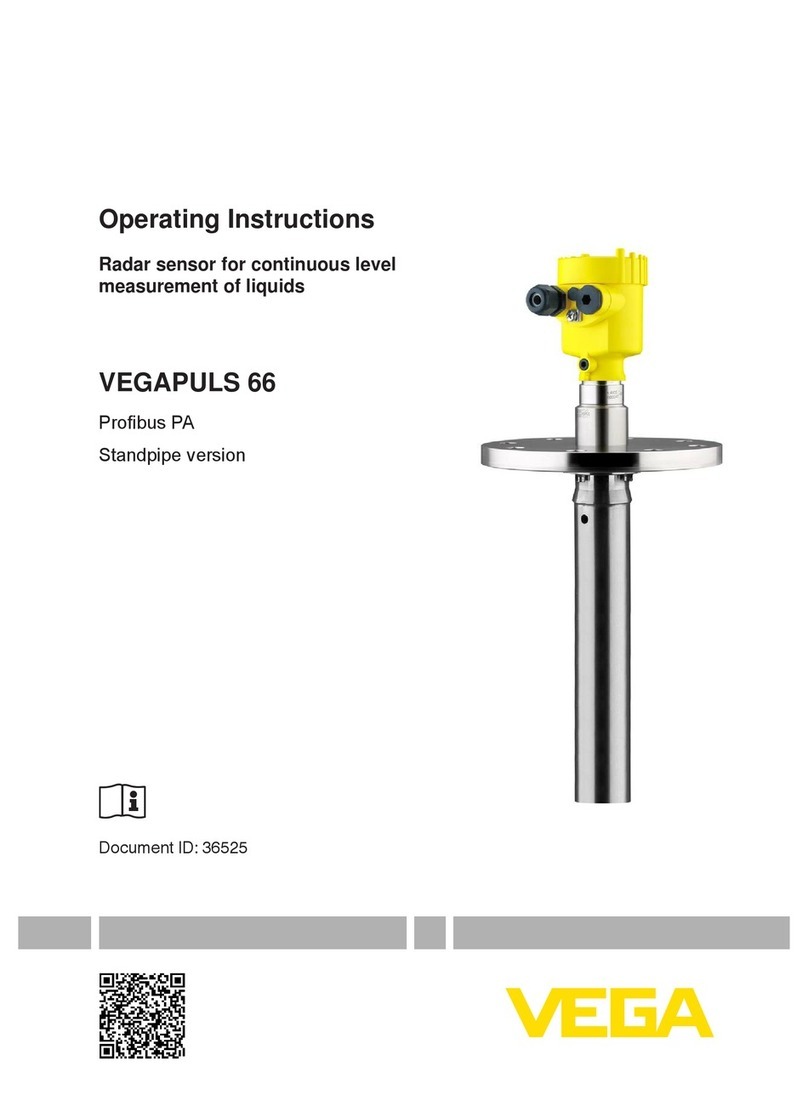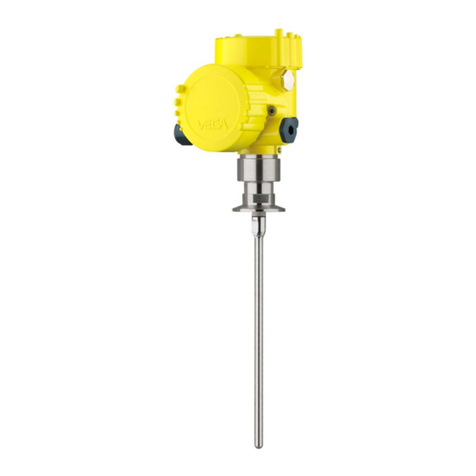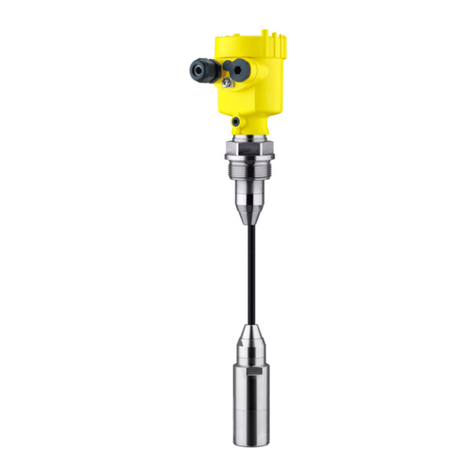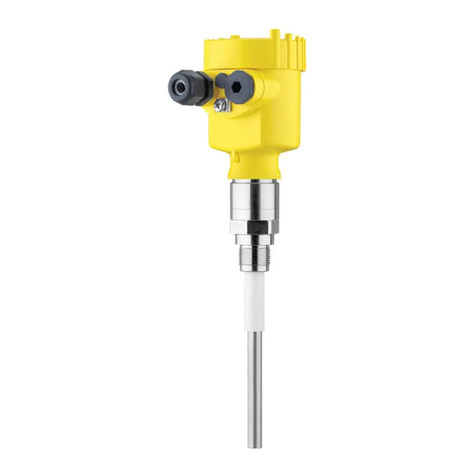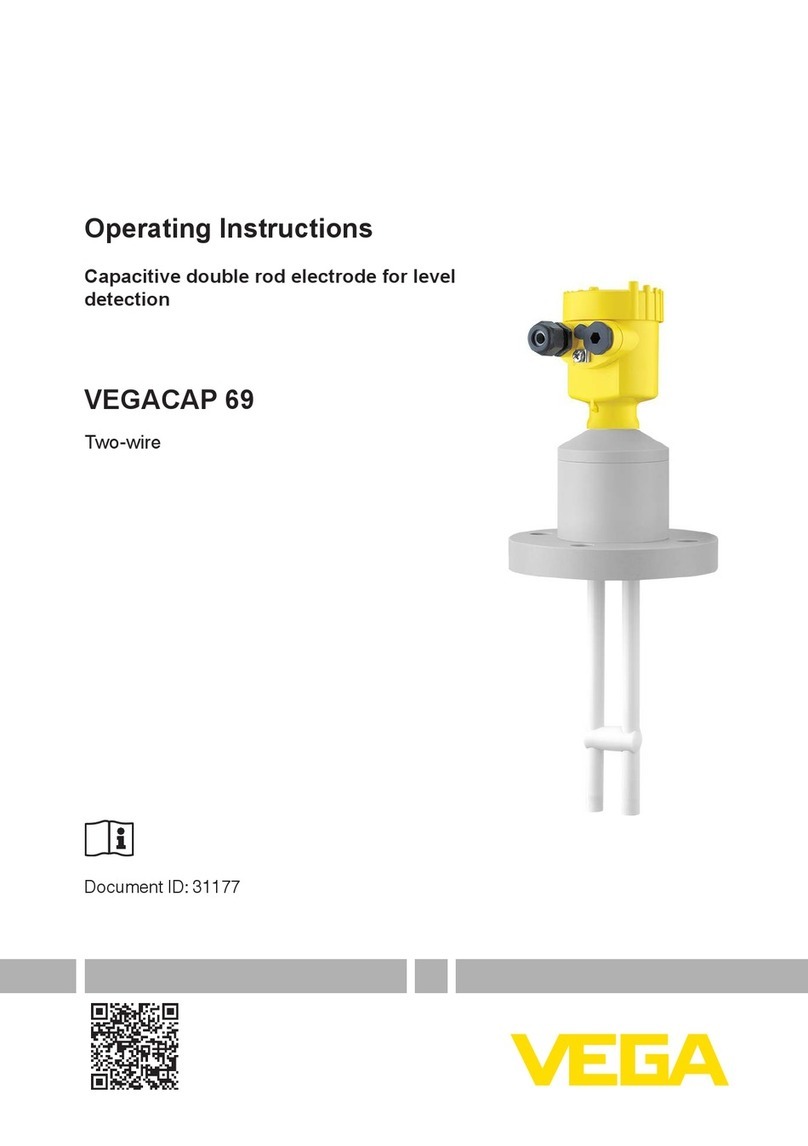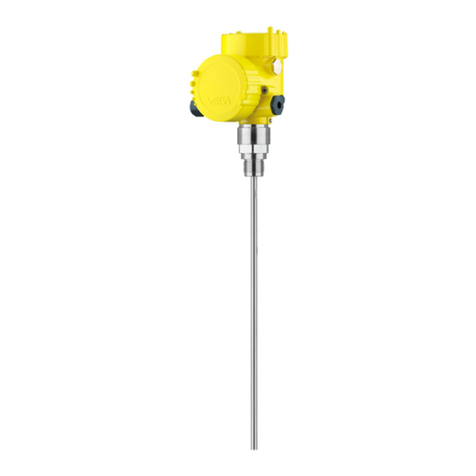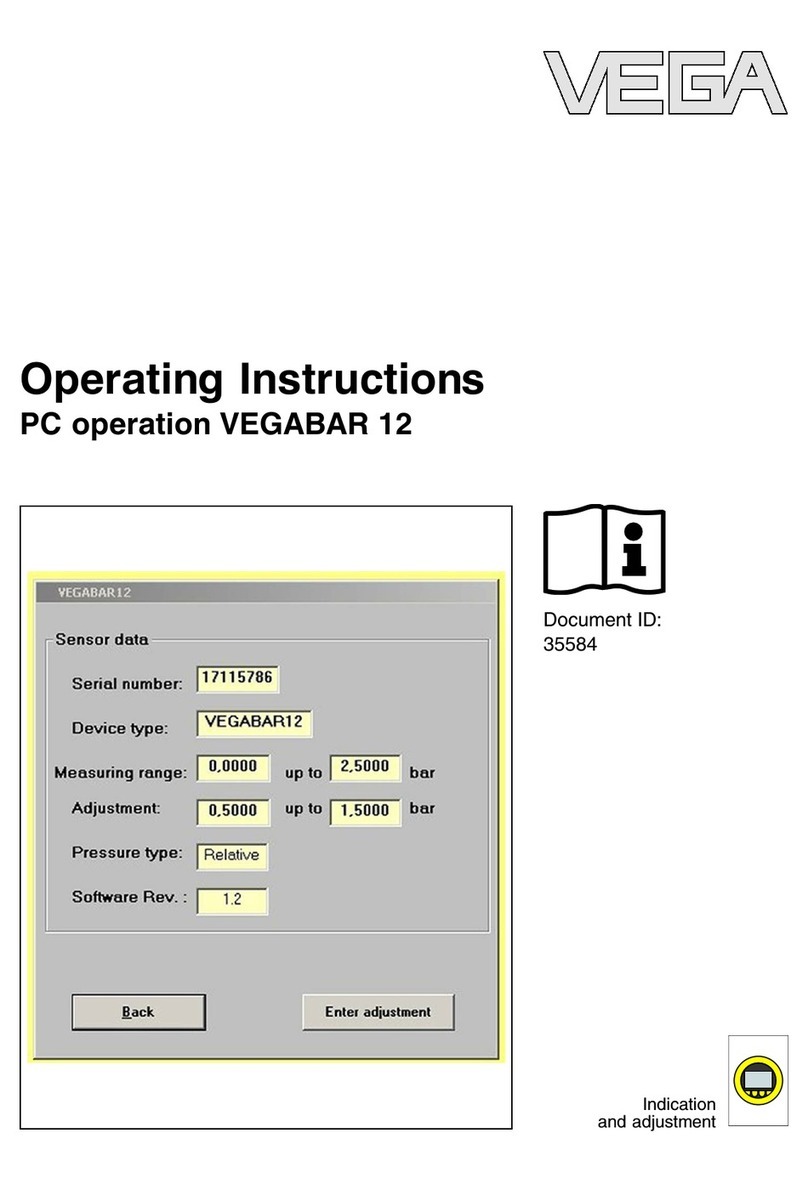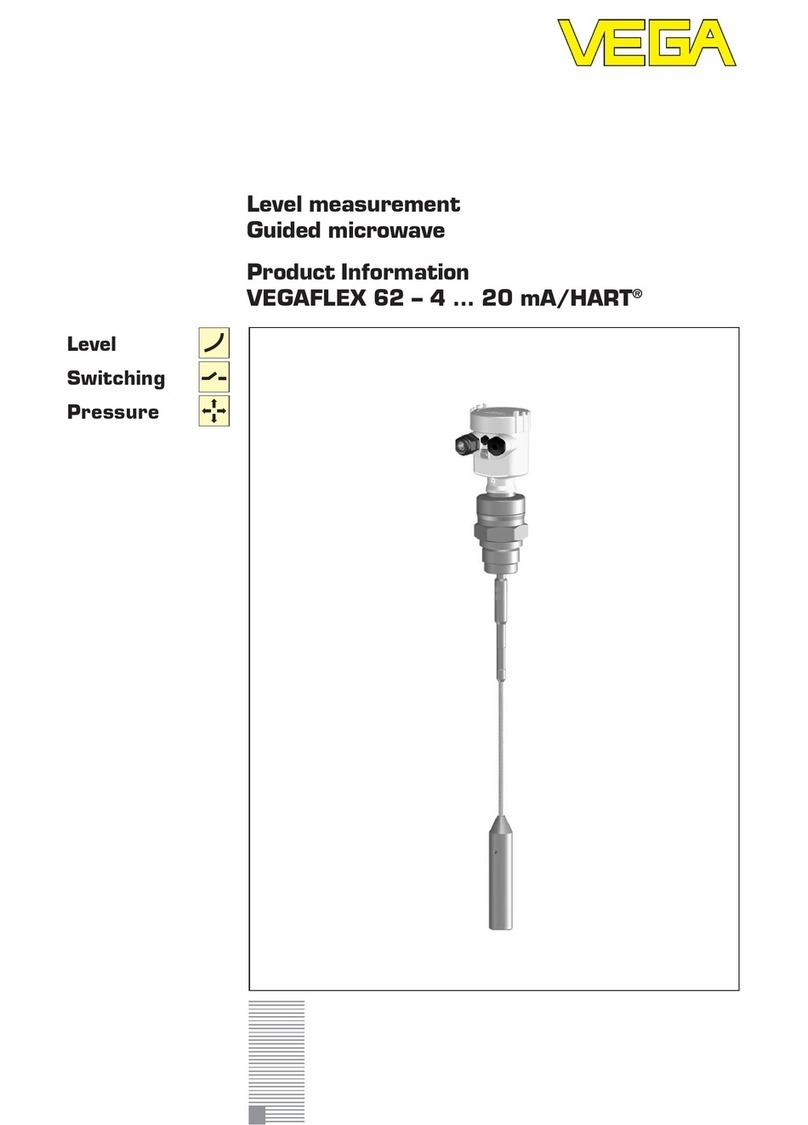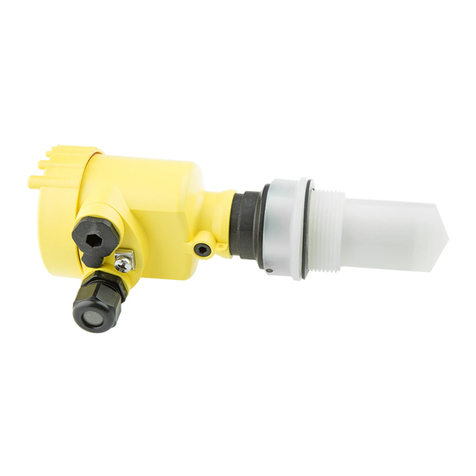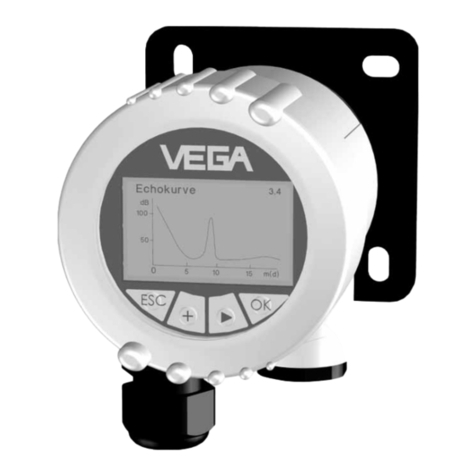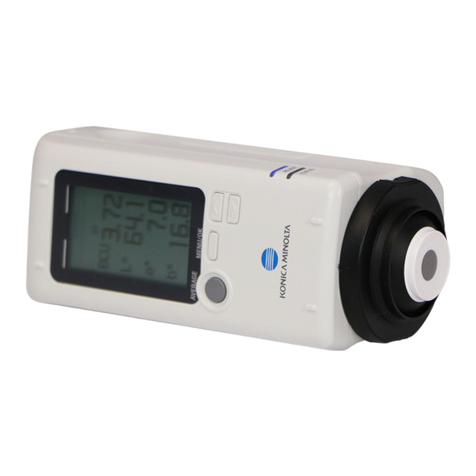Vega ASV-1 perating Manual Page 9
Cal Factor:
This is the offset of the pressure sensor in 0.1mB increments. Adjust your static pressure to be close to sea level pres-
sure. The exact altitude is not important and can be up to several hundred feet. Adjust the calibration factor so the altitude
readout in the top right hand corner of the display agrees with your pitot static test set.
Cal ain:
Once you are satisfied that the low level altitude “CAL FACTOR” is correct apply a static pressure that will result in an al-
titude between 20000 and 30000 ft. Adjust the “CAL GAIN” until the altitude readout in the top right hand corner of the dis-
play agrees with your pitot static test set
N TE: Adjusting the “CAL GAIN” also changes the low level altitude calibration achieved when adjusting the “CAL FAC-
TOR”. Please recheck your low level altitude calibration and adjust if necessary. Recheck your altitude readout at the
higher altitude and if needed slightly adjust the “CAL GAIN” again. Repeat the process until you are satisfied with both
the “CAL FACTOR” altitude and the “CAL GAIN” altitude.
Tape:
Select the desired display tape (Altitude VSI or airspeed). The main display screen will change according to this selec-
tion.
Serial Out:
Select “ON” to enable the RS232 serial altitude output. This formatted serial RS232 message can be directly interfaced to
various RS232 serial input transponders. If a parallel Gillham output is required then a CNV-ALT can be purchased from
your MGL Avionics distributor to convert the RS232 output to a parallel Gillham output.
Prot:
Select the protocol of the serial RS232 output message. The protocol can be selected between GARMIN AT Magellan
Northstar / Garmin Trimble / Garmin MGL Avionics and Microair UAV. Please note that the baud rate is automatically ad-
justed according to which protocol is selected. The output format is as follows. The message contains the current pres-
sure altitude with a fixed reference to 1013.25mB (29.92 inches mercury). All protocols use 8 databits no parity and 1
stop bit. The message is outputted once a second.
Protocol Baud
Rate
Message format Example
Garmin AT 1200 #AL space +/- five altitude digits right jus-
tified zero padded T+25 checksum car-
riage return
The checksum is a simple modulo 256 sum
of the binary values of the individual char-
acters. The checksum is sent as two char-
acters in hexadecimal format
#AL +02372T+25DF[CR]
Magellan 1200 #MGL +/- five altitude digits right justified
zero padded T+25 checksum carriage re-
turn
The checksum is a simple modulo 256 sum
of the binary values of the individual char-
acters. The checksum is sent as two char-
acters in hexadecimal format
$MGL+02372T+2513[CR]
Northstar
Garmin
4800 ALT space five altitude digits right justified
zero padded carriage return
ALT 02372[CR]
Trimble
Garmin
9600 ALT space five altitude digits right justified
zero padded carriage return
ALT 02372[CR]
MGL Avionics 9600 ALT +/- five altitude digits right justified
zero padded 1013.25mB (29.92”Hg) refer-
enced C +/- five altitude digits right justi-
fied zero padded (corrected to local pres-
ALT+02372C+02372L1013+0000XCA[
CR]
